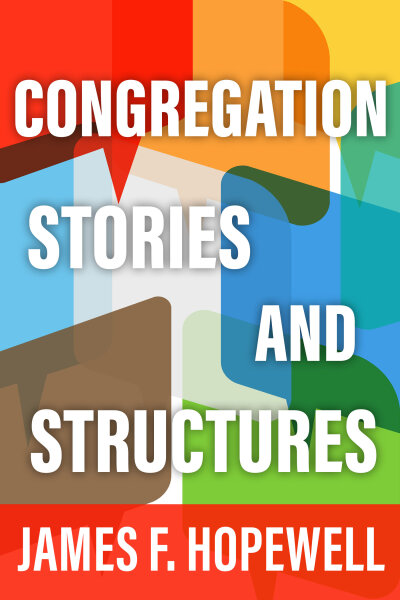Congregation: Stories and Structures
Is the congregation a kind of machine? This metaphor is implicit in those studies that assume congregations operate by rational cause-effect principles, have certain outcomes given certain inputs, and can be made more "productive" if these principles are understood and the inputs controlled. … Hopewell proposes that we study congregations under an entirely different metaphor. He says we should think of a congregation as a conversation, a discourse, an exchange of symbols through which meaning is both expressed and created. Hopewell means by this something more intricate than simply that people talk to each other in church and the subject matter of this talk ought to be analyzed. That's part of it, but he suggests that all the interactions that go on in congregations (including the rituals and gestures of both daily and formalized life together as well as the architecture and artifacts of the physical space in which they take place) "say" something, "mean" something, are symbolic expressions. Furthermore, each such expression is responsive to and dependent upon other expressions, to the point that no symbolic expression stands alone. In other words, the symbolic discourse is patterned– and in different ways in different congregations. These patterns are basic to the identities of particular congregations. Hopewell's hunch is that if you can discern the patterns in and through the constant flow of symbolic discourse, you can hear who a congregation is and understand what it is all about.
—from a review in Perkins Journal by Craig Dykstra
—from a review in Perkins Journal by Craig Dykstra
- This item is not returnable
- Ships in 2 or more weeks
-
Quantity discount
- # of Items Price
- 1 to 9$22.00
- 10 or more$16.50
$22.00
